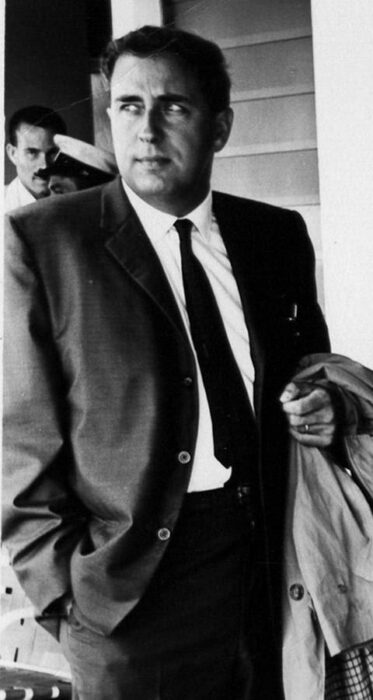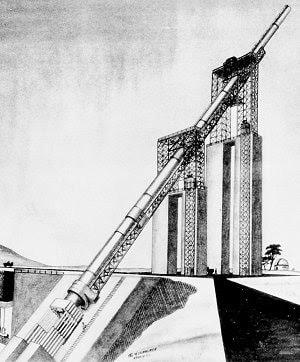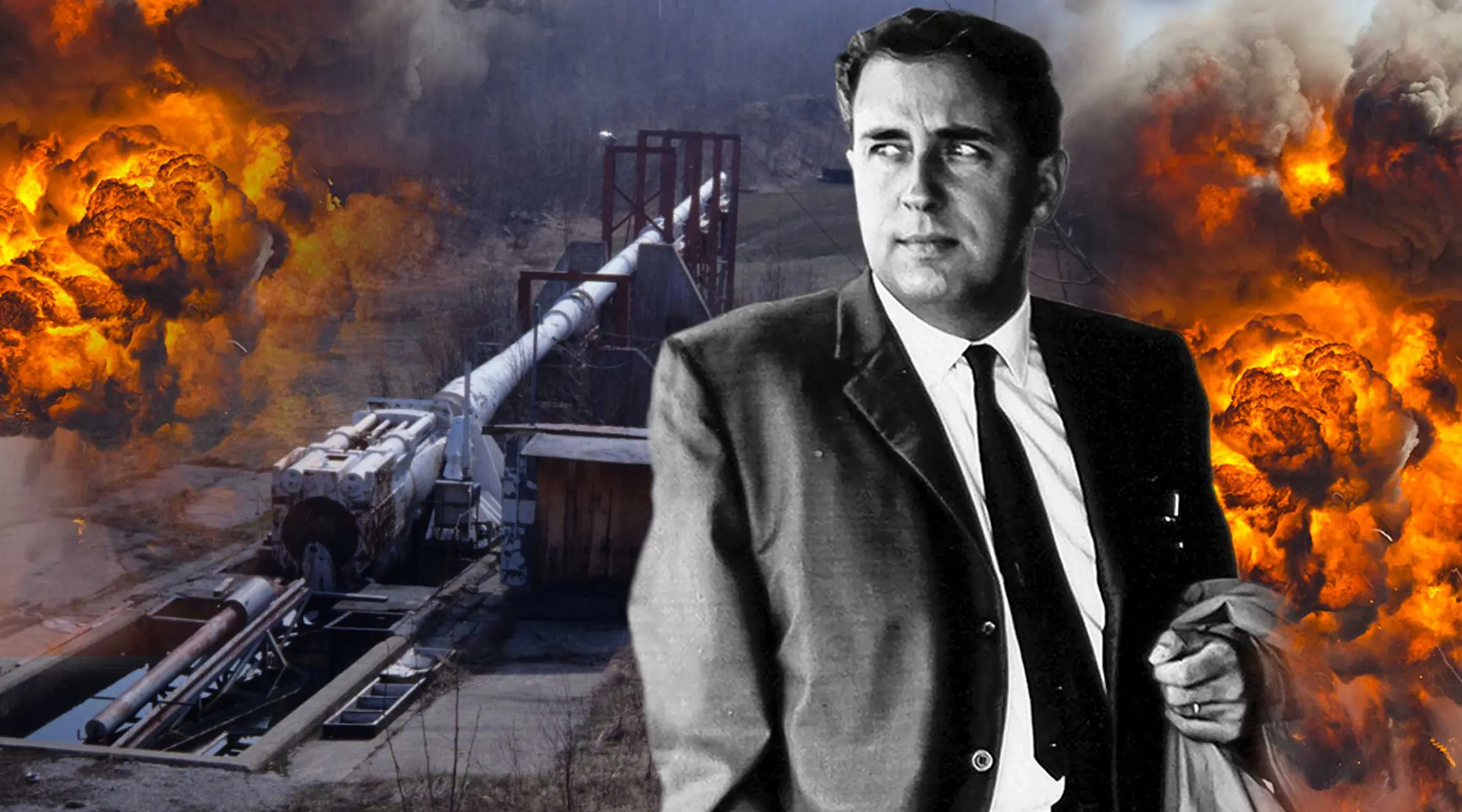The Brussels police report was concise, clipped, and cryptic. The press speculation that followed the crime however got the attention of diplomats and policy makers worldwide. Following the March,1990 murder at an upscale Brussels suburb, theories as to the who, what and why of the crime remain germane today. What follows is the story of Dr. Gerald Bull and the role Belgium’s unique reputation played in this drama.
When the police officers arrived at the murder scene in Uccle, a stylish Brussels suburb, they found the victim dead— shot twice in the neck and 3 times in the back. The investigators determined the gun was fired at point-blank range and the killer took the time to remove the bullet casings. The victim’s key was still in the door. The victim’s unopened briefcase containing $20,000 in cash lie along-side the body. Ergo, the police ruled out suicide and robbery. The victim was identified as Dr. Gerald Bull. The case begs the questions: Who was Gerald Bull? Why was he not murdered per se, but seemingly executed? Why did the worldwide press seem to pay so much attention? What role did Belgium’s political climate play in this crime?
Gerald Bull (1925-1990) was a Canadian engineer whose field of expertise was aerodynamics. At age 22 yrs. Gerald became the youngest engineering PHD in Canada. He graduated into a world where the Cold War and the Space Age had just begun. Young brilliant engineers were fast tracked for defense work and Gerald was no exception. He was promptly recruited by well-funded Canadian and American operations who researched space flight via missiles, ballistic rockets, and satellites. With attention turning to space after the launch of Sputnik in 1957, young Dr. Bull made no secret of his personal ambition/obsession of using a howitzer- type artillery cannon to launch satellites and scientific payloads into space. Why not shoot projectiles into space via the barrel of a big gun rather than the more expensive ballistic missiles systems? Bull wanted Canada and the U.S.A. to dominate space by pioneering the use of what he called “super-gun technology.” Thus, began Bull’s lifelong dedication to the “big-gun” study of artillery. Dr. Bull tended to think big and by the mid-1960’s he was able to develop a super gun that launched projectiles that reached altitudes of 250 km. into space. These long-range guns at times were as much as 110 feet long. All advances were not seamless however. Test firings experimented with various fuels were inconsistent as were electronics and radar systems. Along changing attitudes towards governmental spending and some negative press reviews, Bull’s projects faced persistence budget problems. Over time, Bull lost a lot of Canadian and American funding but his work got the attention of the militaries around the globe. If Bull had developed a gun capable of putting a projectile into orbit could not the same gun be put to land use ? His valuable work on ballistics drew the attention of defense departments and intelligence agencies from Tel Aviv, to Chile, Lebanon, China, England, Sweden, and the Soviet Union. Bull, whether aware of it or not, found himself the focus of investigations. He fell from grace and was accused of passing sophisticated technology to the non-allied countries. In 1980 Dr. Bull was arrested for “illegal arms sales” and “transferring technology” of long-range artillery to South African in their campaigns against the communists in Angola. Officially he had violated a United Nation Security Council Resolution regarding arms export. Bull spent the next 6 months in a United States Federal prison.
Gerald Bull emerged from prison very much disillusioned. He felt his prison sentence was a “set up” show trial and political theater meant to demonstrate the U.S and Canada’s new found commitments to “human rights” (think Jimmy Carter) . He was after all a left-brained engineer —more concerned with analytical/ calculations and scientific method rather than vetting those willing to provide funding for his research. Bull admittedly was politically naïve lost in a complex world he did not understand . He was after all, a scientist not an accountant. Feeling so betrayed and disillusioned that Bull turned his back on North America. He looked to Europe, and specifically Brussels Belgium, to continue his technical genius.
It was no accident that Bull chose Belgium to continue his work. Since the Middle Ages, Belgium has been recognized as a world center for arms trade. The country has a long tradition for making, selling, and exporting arms and ammunitions. It has a lenient firearms legislation involving export and control over international arms transactions The Belgium government had a reputation for being generous with “end user certificates” and exported over 90% of its total arms production. When it came to international cliental, there were few restrictions.
Dr. Bull found Brussels an easy fit. With a reputation as “the greatest artillery genius of his generation,” Bull began to get funding offers from all over the world. China inquired about the possibility of “big guns” in their continued northern border dust -up with Russia. Chile inquired about the feasibility of advanced artillery systems with their border dispute with Peru. Syria showed a similar interest as did Israel and Iran. But when Iraqi President Saddam Hussein contacted Dr. Bull with a $25 million downpayment to build a “super-gun” in his war with Iran, the political calculus changed. Called Project Big Baylon, the endeavor became the first true space gun project. The massive gun, designed to be 156 meters in length and weighting 1500 tones, would far overshadow the biggest cannon (by a factor of 4), ever produced. Big Babylon would theoretically be capable of firing a 600kg projectile across a 1,000-kilometer range—-well within the striking distance of Kuwait, Iran, Cairo, Beirut, Tel Aviv, and Jerusalem. The cooperation between Bull and Hussein was perceived as an immediate threat worldwide. The CIA, MI6, and the Mossad especially began to take notice. Less than 18 months after the inception of the Project Big Baylon it would all come to an end for Gerald Bull in a Brussels suburb.
The official police report listed Bull’s demise merely as a “death.” Considering the dark, complicated underworld of international politics, perhaps a better word choice would have been “assassinated.”
The case remains unsolved.


Dear reader ,
Opinions expressed in the op-ed section are solely those of the individual author and do not represent the official stance of our newspaper. We believe in providing a platform for a wide range of voices and perspectives, even those that may challenge or differ from our own. We remain committed to providing our readers with high-quality, fair, and balanced journalism. Thank you for your continued support.



